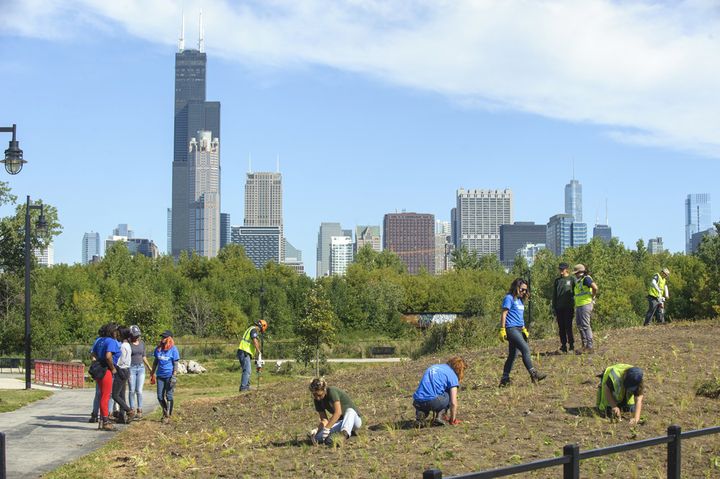In Chicago’s Chinatown neighborhood, The Nature Conservancy and the Chicago Park District are teaming up with residents to keep a local park vibrant and vital.

Just south of downtown Chicago, you’ll find Ping Tom Memorial Park, home to 12 acres of riverfront, natural areas and playgrounds. Once a railroad yard, the hard work of community members and local organizations transformed it into the neighborhood’s first green space in almost 30 years.
Now, Debbie Liu and the park’s advisory council are joining forces with the Chicago Park District and The Nature Conservancy to take the park’s natural areas to the next level. With a Master’s in Public Health, Debbie is a passionate advocate for green spaces and giving communities access to nature. With urban populations swelling around the world, it’s more important than ever that we’re working to ensure people have access to nature and the benefits it provides.
I recently spoke with Debbie about her role at the park, why nature is so important in urban areas, and what she hopes to see in the future.
Pascal Mittermaier: Debbie, tell me: What made you want to get involved with the park advisory council (PAC)? What kind of projects have you worked on so far?
Debbie Liu: I am a strong believer in making everyone's default choices be their healthiest ones. Having access to parks and open spaces is important for health and improves the sense of community and safety. Plus, I want to make the beautiful Ping Tom Park a park that everyone wants to go to, whether or not they are from the Near South Side of Chicago.
As an officer for the PAC, I manage the Facebook page and work on stewardship programming. The PAC holds various clean up events and other family-friendly and cultural events. The one event that I am the most proud of is definitely the “Petals and Pedals” event we held last year. I had the pleasure of working with like-minded people to reimagine what conservation and community can look like in an underserved, primarily low-income and foreign-born population. The event featured native seed and plug plantings at our natural areas, as well as a coordinated bike ride through the community, and cultural elements like traditional dragon performances. It was a wild ride—I do not think anyone from the first conversation would have thought the event would have turned out the way it did. It started with a simple planting idea but everyone at the table was connected to more resources and people, making the event bigger and better. It’s amazing when the whole is greater than the sum of its parts! (You can watch a video of the event here.)

PM: What did this event mean to you personally? What did it mean to the community?
DL: Since Chinatown does not have a designated gardening, walking or biking group, I was impressed at the number and types of different people who came out to plant, bike and/or kayak that day. It is a testament that there is interest in these areas and there should be more events like this one to take advantage of the skills and interests of the diverse community—and the natural assets in and around the community.
PM: What do you hope to see happen as a result of this event? Or what have you already seen happen in the community since the event was held?
DL: I'm particularly interested in training a future generation that can understand the complex environmental issues and the role we can play in them. This year, the PAC has been more conscious about planning meaningful stewardship events with old and new partners. The Park has received a good amount of interest in such partnerships since our successful events and track record of dedicated involvement. Above all, the best thing that has happened is the growing interest from everyday people across Chicago who happened onto the hidden gem and want to stay involved. That is a true testament of what Chicago can look and feel like!

PM: One last question: Why does nature matter to you personally?
DL: I recognize that I do not live on this Earth alone and my survival depends on the plants and wildlife around me. I hope to protect it as best I can throughout my lifetime and to ensure it is still around for my children and for future generations. I also see nature as a way into my past—a glimpse into my cultural identity and my ancestors who were farmers in China before settling in Hong Kong.
Chicago is part of a growing network of cities the Nature Conservancy is working with to promote greater integration of nature. Read more about these local communities who are promoting natural solutions and engaging youth in environmental stewardship to tackle the challenge of making cities sustainable places to live.